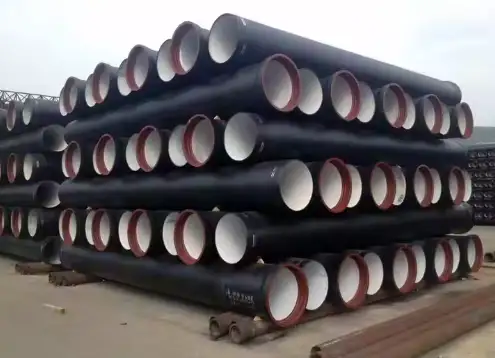Ductile iron pipes are renowned for their strength and durability, making them a popular choice in various plumbing and construction applications. However, when it comes to modifications or repairs, cutting these pipes can pose challenges. A common question among professionals and DIY enthusiasts is whether a Sawzall (reciprocating saw) can effectively cut through ductile iron. This article delves into the capabilities, methods, and safety considerations of using a Sawzall for cutting ductile iron pipes.

Understanding Ductile Iron Pipes
Ductile iron is a type of cast iron that has been treated to improve its strength and ductility. This material is commonly used for water and sewer lines due to its resistance to corrosion and ability to withstand high pressure. Ductile iron pipes are typically thicker and more robust than standard cast iron pipes, which can make cutting them more challenging.
Can a Sawzall Cut Through Ductile Iron?
Yes, a Sawzall can cut through ductile iron pipes, but several factors influence its effectiveness:
-
Blade Selection: Using the appropriate blade is crucial. Blades designed for cutting metal, especially those labeled for cast iron or thick metals, are ideal.
-
Sawzall Specifications: The power and stroke length of the reciprocating saw affect its ability to cut through tough materials.
-
Cutting Technique: Proper technique, including maintaining a steady pace and allowing the tool to do the work, ensures a clean cut.
Recommended Blades for Cutting Ductile Iron
To achieve optimal results when cutting ductile iron with a Sawzall, consider the following blade options:
| Blade Brand | Blade Type | Features |
|---|---|---|
| Diablo | Carbide-tipped | Designed for thick metal cutting |
| Lenox | Diamond grit | Provides durability and precision |
| Milwaukee | Nitrus Carbide | Offers long-lasting sharpness |
| DEWALT | Bi-metal | Versatile and cost-effective |
| Bosch | Carbide-tipped | Known for clean cuts and longevity |
These blades are specifically designed to handle the toughness of ductile iron, ensuring efficient and safe cutting.
Step-by-Step Guide to Cutting Ductile Iron with a Sawzall
-
Preparation:
-
Ensure the Sawzall is in good working condition.
-
Select the appropriate blade for metal cutting.
-
Wear safety gear, including gloves, goggles, and hearing protection.
-
-
Marking the Cut:
-
Use a measuring tape and marker to clearly indicate the cutting line on the pipe.
-
-
Securing the Pipe:
-
Clamp the pipe securely to prevent movement during cutting.
-
-
Cutting:
-
Start the Sawzall and allow the blade to reach full speed before making contact with the pipe.
-
Guide the saw along the marked line, applying steady pressure without forcing the tool.
-
-
Finishing:
-
Once the cut is complete, turn off the Sawzall and inspect the cut edges for smoothness.
-
Deburr any sharp edges using a file or deburring tool.
-
Safety Considerations
Cutting ductile iron with a Sawzall involves risks due to the material’s hardness and the potential for flying debris. To mitigate these risks:
-
Always wear appropriate personal protective equipment (PPE).
-
Ensure the work area is clear of flammable materials, as sparks may be generated.
-
Maintain a firm grip on the Sawzall and keep hands away from the cutting area.
-
Regularly inspect the blade for wear and replace it as needed.
Alternative Methods for Cutting Ductile Iron
While a Sawzall is effective, other methods can also be considered:
-
Angle Grinder: Equipped with a diamond blade, it can quickly cut through ductile iron.
-
Cutting Torch: Utilizes high heat to melt through the material, suitable for thick pipes.
-
Pipe Cutter: A manual tool that scores and breaks the pipe, offering precision.
Each method has its advantages and is suitable for different scenarios.
Common Questions
1. What is the best blade for cutting ductile iron with a Sawzall?
The best blade is one specifically designed for cutting metal, such as carbide-tipped or diamond grit blades. These blades are engineered to withstand the hardness of ductile iron and provide clean cuts.
2. Can a Sawzall cut through other materials like PVC or steel?
Yes, with the appropriate blade selection, a Sawzall can cut through various materials, including PVC, steel, and wood. It’s essential to choose a blade compatible with the material to ensure efficiency and safety.
3. How do I maintain my Sawzall for optimal performance?
Regular maintenance includes cleaning the tool after use, checking for loose parts, and lubricating moving components. Additionally, ensure that the blade is securely attached and in good condition before each use.
4. Is it necessary to secure the pipe before cutting?
Yes, securing the pipe prevents movement, ensuring a straight and accurate cut. Clamping the pipe also reduces the risk of accidents and enhances safety.
5. What safety precautions should I take when cutting ductile iron?
Always wear safety goggles, gloves, and hearing protection. Ensure the work area is well-ventilated and free of flammable materials. Keep hands and other body parts away from the cutting path.
6. Can I rent a Sawzall for this task?
Yes, many hardware stores offer tool rental services, including Sawzalls. Renting can be a cost-effective option if the task is a one-time project.
Conclusion
Cutting ductile iron pipes with a Sawzall is feasible and efficient when using the correct blade and following proper safety protocols. By selecting the appropriate tools and techniques, both professionals and DIY enthusiasts can successfully modify or repair ductile iron piping systems.
Note: For a visual demonstration of cutting cast iron pipes with a Sawzall, refer to the following video:
References:
- AWWA C151/A21.51 – Ductile Iron Pipe Standards (American Water Works Association)
- OSHA Personal Protective Equipment (PPE) Standards (Occupational Safety and Health Administration)
- Power Tool Safety Guidelines (U.S. Consumer Product Safety Commission)
- Ductile Iron Pipe – Wikipedia Overview
- NFPA Guidelines on Safety in Cutting and Welding (National Fire Protection Association)

